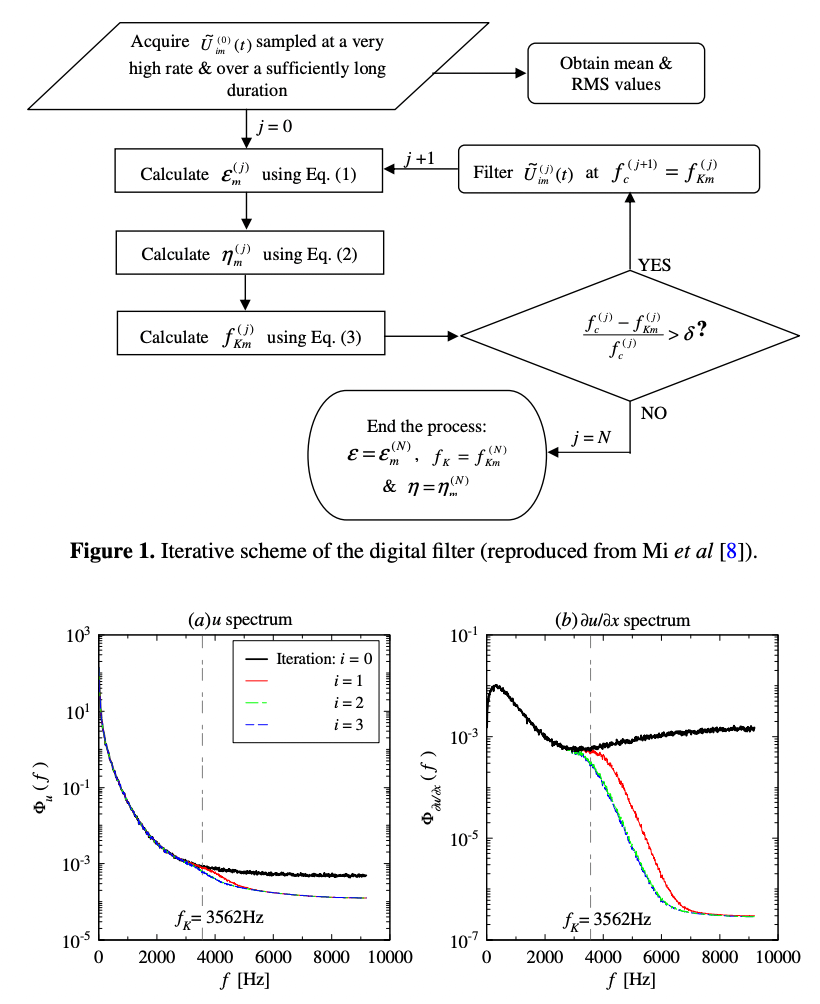Abstract
The experimental work on fine-scale properties of turbulence has so far been based mainly on hot-wire and cold-wire measurements. These measurements often suffer from contamination by electronic (including thermal, shot, flicker, burst, etc) noise or from over-filtering by somewhat arbitrary, inappropriate filter settings. This may be overcome by a fast-convergent iterative scheme of filtration developed recently by Mi et al (2005 Phys. Rev. E 71 066304). The present study is carried out (1) to investigate the effectiveness of the scheme using velocity signals (um) obtained from hot-wire measurements in both circular and plane turbulent jets and (2) to assess the effect of the low-pass-filter cut-off frequency on measurements of various small-scale turbulence properties. The results reveal that the electronic noise in um, if not cleaned, may seriously contaminate the fine-scale properties of turbulence derived from um, consequently yielding wrong estimations of typical scales, such as Kolmogorov and Taylor scales. After removing the noise contribution properly, however, these characteristic scales are all obtained appropriately and follow closely their self-preserving relations which have been well confirmed in the past.

